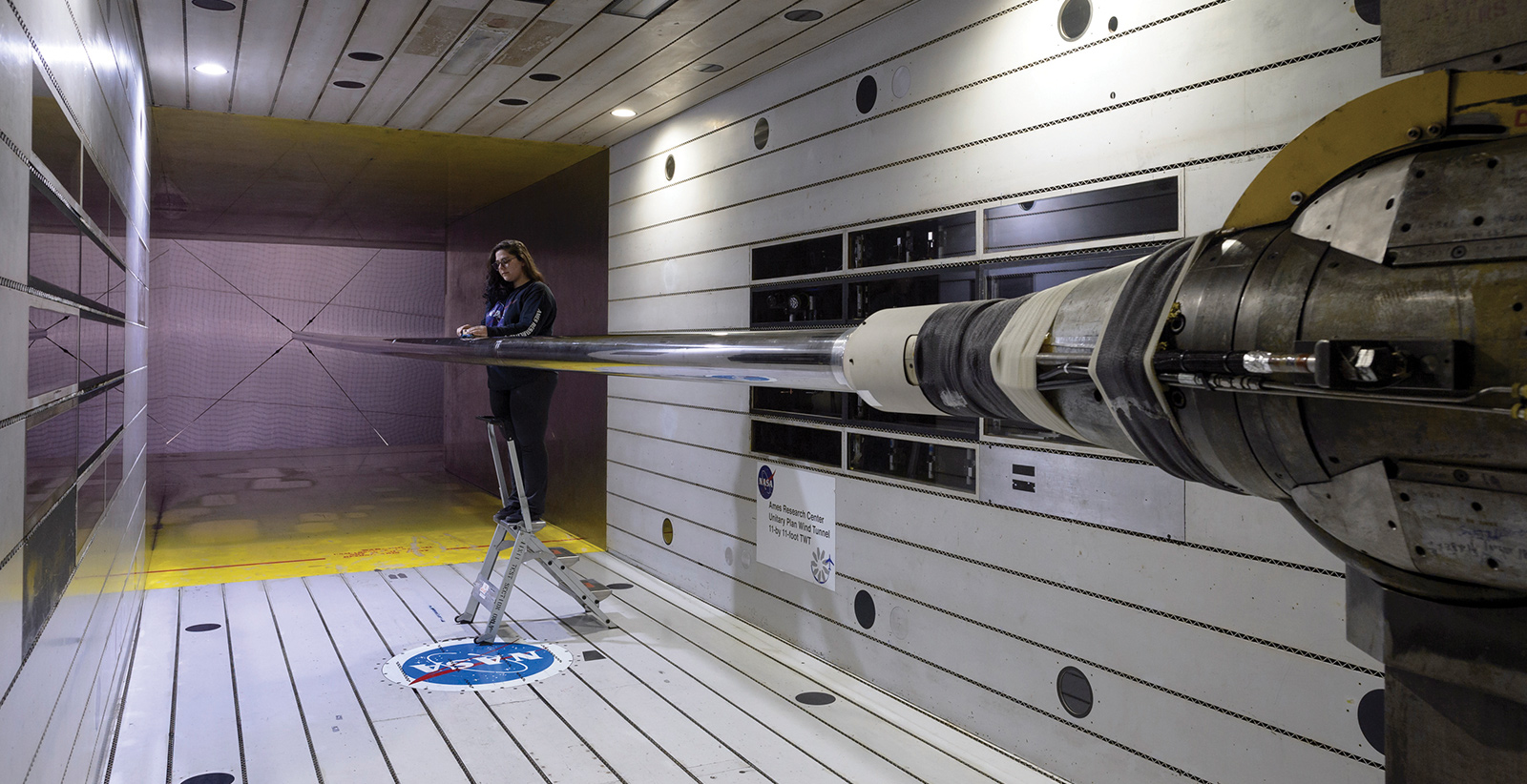Stay Up to Date
Submit your email address to receive the latest industry and Aerospace America news.
The Ground Testing Technical Committee focuses on evaluating aircraft, launch vehicles, spacecraft, structures and engines in wind tunnels and other facilities.
The ground testing community overcame significant project delays and challenges due to the pandemic to achieve important milestones. The U.S. Air Force’s Arnold Engineering Development Complex maintained critical testing at its headquarters in central Tennessee while several of AEDC’s geographically separated units also made significant strides. The National Full-Scale Aerodynamics Complex in California demonstrated capabilities on an acoustic survey rail featuring a traversing microphone array in the 40-by-80-foot wind tunnel in early February. This effort preceded a U.S. Army and Sikorsky study of the aeroacoustic characteristics of a scaled pusher-propeller configuration in the wake of both a 17% scale UH-60 Black Hawk fuselage and a NACA0015 wing. The staff of the AEDC Hypervelocity Wind Tunnel 9 in Maryland bolstered its array of high-Mach test capabilities by adding a Mach 18 nozzle in July. The facility can now supply accurate flow environments at Mach 7, 8, 10, 14 and 18.
The NASA Ames 11-by-11-foot Transonic Wind Tunnel underwent a calibration in the first quarter. The effort compared data on a 55-foot long static pipe spanning the entire length of the nozzle and test section to a 15-foot short static pipe, followed by benchmark data on the 11-foot’s check-standard model from Mach 0.2 to 1.4 at pressures from 0.33 to 2.2 atmospheres. This supported the Unitary Plan Wind Tunnel Characterization Effort at NASA’s Ames Research Center in California. Meanwhile, Ames’ Arc Jet Complex continued thermal protection, vehicle structures, aerothermodynamics and hypersonic entry testing with NASA and contractors, supporting both the Orion and Mars Perseverance rover materials development efforts.
The National Transonic Facility at NASA’s Langley Research Center in Virginia in March continued cryogenic testing on a Space Launch System rocket model. Test temperatures were as low as minus 155 degrees Celsius (minus 250 Fahrenheit), speeds up to Mach 0.95, unit Reynolds number up to 82 million per foot and dynamic pressures up to 3,500 pounds per square foot. The solid rocket booster attach brackets in the wind tunnel were made by Direct Metal Laser Sintering with Inconel-718. Since these were structural components, NTF required additional post-fabrication coupon testing and X-ray-computed tomography scans of the structural attachments for the booster’s solid fuel before testing. NASA Glenn Research Center’s Space Environments Complex at Plum Brook Station, Ohio, hosted a variety of programs supporting development of NASA’s Artemis lunar crew spacecraft. Thermo-vacuum and electromagnetic interference and compatibility testing at pressures of 10-6 torr and temperatures down to minus 155 Celsius began in late 2019 and ran continuously for two months into 2020. The spacecraft returned to Kennedy Space Center in Florida in preparation for its mission to the moon.
AeroTEC, headquartered in Seattle, completed ground and flight integration testing on the AeroTEC/MagniX eCaravan Flying Test Bed, which the company says is the largest all-electric commercial aircraft. The aircraft combined a new 750-horsepower Magni500 electric motor with a new energy storage system on a well-proven Cessna 208B Grand Caravan airframe. Testing was performed at the AeroTEC Flight Test Center in Moses Lake, Washington, with first flight in May.
The first quarter of the year saw significant international accomplishments. JAXA, the Japan Aerospace Exploration Agency, demonstrated its new Magnetic Suspension and Balance System on a delta wing model in its 60-by-60-centimeter low-speed wind tunnel at Chofu. The system seamlessly levitates models magnetically to high angles of attack for 6 degrees of freedom force and moment measurements, while adding oscillatory capabilities for dynamic stability derivative measurements — all without model support interference. A partnership among Boeing, the European Transonic Wind Tunnel, Deharde GmbH in Germany and NASA Langley’s NTF marked completion on the first phase of a multiyear validation effort for Remote Control Actuation capability on cryogenic wind tunnel models using a 4.5% scale Boeing 787 semi-span model. This method, using shape-memory-alloy technology, can reduce testing times up to 90% at flight Reynolds number.
Contributors: Emily Brown, F. Tad Calkins, Victor Canacci, David Chan, Pat Goulding, George Moraru, Shinji Nagai and Eric Paciano
Related Posts
Stay Up to Date
Submit your email address to receive the latest industry and Aerospace America news.




